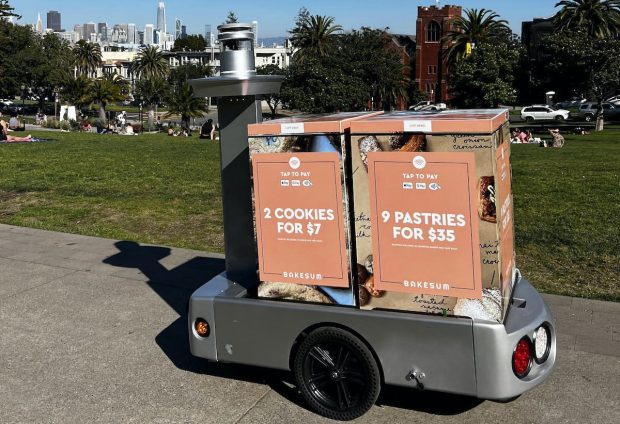
Throughout 2023, the automation of food preparation, production and service has been increasingly enabling the creation of more kinds of vending machine experiences, with pies being the latest food to get the robotic treatment.
In New Zealand, WM Robotics’ PieBot vending machine is serving hot meat pies, with five locations live and 12 more soon to come, The Spoon reported. The company has plans to enter the United States down the line.
The move comes as automated technologies broaden the scope of the traditional vending machine model. Food giant Nestle shared earlier this year that its frozen pizza brand DiGiorno is testing a pizza-making vending machine, selling ready-to-eat thin crust DiGiorno pies.
Autonomous noodle chain Yo-Kai Express has been expanding all around the world.
Beaded ice cream brand Mini Melts has been using its automated kiosks to drive sales at times when venues, such as zoos, cannot keep carts staffed.
“With the way that the labor market is, the zoo doesn’t always have someone to man that cart from nine-o’clock in the morning, when the zoo is open, until six-o’clock in the evening,” Vice President of Distribution Jenna Benvignati told PYMNTS in an interview posted in September. “So, the automated kiosk supports those sales where, if the [employee-operated location] isn’t opening until two in the afternoon, our customer’s still able to get the product before then.”
Plus, Tortoise, a company that had previously focused on robotic solutions for last-mile delivery, announced last year that it was turning its focus to providing automated mobile shops — effectively roving vending machines.
Consumers have their hesitations about food service automation, but those doubts may not be as relevant to vending machines. The PYMNTS Intelligence exclusive report “Connected Dining: The Robot Will Take Your Order Now,” which drew from a survey of nearly 2,000 U.S. consumers, revealed that 33% of men and half that share of women said they would be interested in visiting a restaurant that uses robotics.
Yet last year’s study “The Digital Divide: Technology, the Metaverse and the Future of Dining Out,” a PYMNTS Intelligence and Paytronix collaboration, revealed that consumers tended to feel more positively about technology’s presence in grab-and-go. For instance, 51% of grab-and-go diners felt positive about ordering through a self-service kiosk, while 20% of dine-in restaurant customers said the same.
In an interview with PYMNTS earlier this year, Geoff Henry, then president of Jamba, discussed the progress of the restaurant’s automated smoothie shop’s partnership with Blendid, highlighting positive responses from consumers who have tried it, especially among younger consumers who are more open to testing new technologies.
“The repeat rate has been very high,” Henry said at the time. “We’re obviously tracking those who purchase and then come back and purchase again [and] benchmarking that relative to what we would expect versus industry standards, and we’ve been pleased.”
Henry is not the only one observing this trend.
“The demand for these grab-and-go formats has gone through the roof,” Shriya Gupta, CEO of Toronto-based vending machine artificial intelligence provider Daily Blends, told PYMNTS in an interview posted in March. “People are really looking for healthy and affordable meals on the go.”